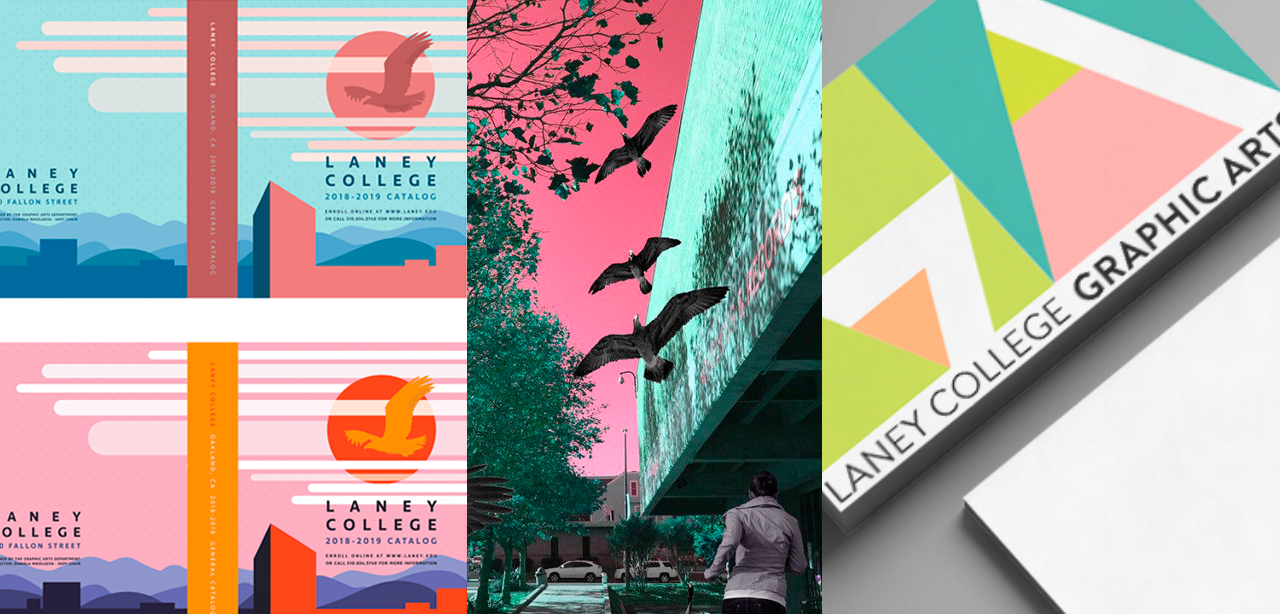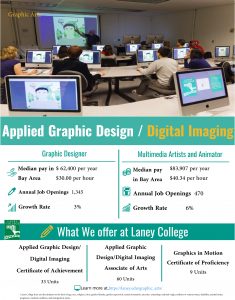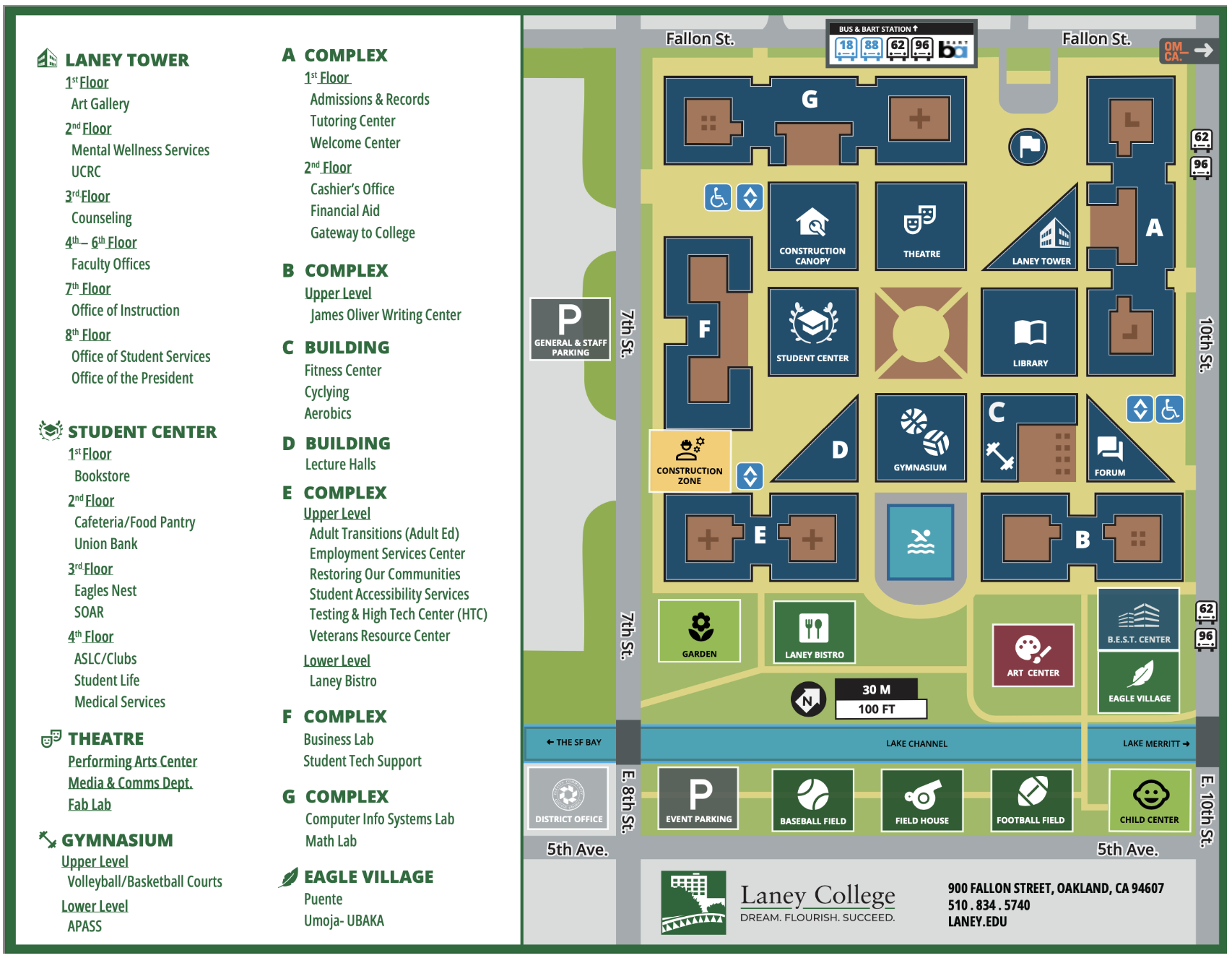The AA degree and certificate in Applied Graphic Design/Digital Imaging offer hands-on experience for students interested in combining artistic creativity and computer technology. Students receive practical knowledge of processes, theory of design principles and elements, computer software applications, and personal communication skills.
Laney College Graphic Arts Dept. Mission Statement:
Our mission is to promote student success, to provide our diverse community with educational opportunities, and to transform lives.The Laney College Graphic Arts Department provides a first-tier education in Graphic Arts at an affordable rate. The diversity of the multi-generational and multicultural population of students and faculty provides a unique learning experience. We teach graphic design and new-media skills using the latest software used in the print and online media industries.
A degree in graphic arts opens up a variety of career opportunities in both traditional and digital media fields. Here are some potential career paths:
- Graphic Designer: Graphic designers create visual concepts using computer software or by hand to communicate ideas that inspire, inform, or captivate consumers. They develop the overall layout and production design for various applications such as advertisements, brochures, magazines, and corporate reports.
- Web Designer: Web designers specialize in creating engaging and user-friendly websites. They combine graphic design skills with technical knowledge of web development tools and languages such as HTML, CSS, and JavaScript to design and build visually appealing and functional websites.
- UX/UI Designer: User experience (UX) and user interface (UI) designers focus on creating intuitive and aesthetically pleasing interfaces for websites, mobile apps, and software. They conduct research to understand user needs and preferences, and then design interfaces that optimize usability and enhance user satisfaction.
- Multimedia Artist/Animator: Multimedia artists and animators create visual effects and animations for various media such as films, television shows, video games, and websites. They use computer software to generate images and animations that convey stories and engage audiences.
- Brand Identity Designer: Brand identity designers develop visual identities for businesses and organizations, including logos, typography, color palettes, and other branding elements. They ensure that the visual identity aligns with the brand's values and resonates with its target audience.
- Art Director: Art directors oversee the visual aspects of advertising campaigns, publications, or movie and television productions. They work closely with clients, creative teams, and other stakeholders to develop and execute creative concepts that effectively communicate the desired message or story.
- Packaging Designer: Packaging designers create packaging solutions for products, including boxes, bottles, and labels. They combine aesthetic considerations with practical concerns such as product protection and shelf appeal to design packaging that stands out on the retail shelf and enhances the consumer experience.
- Print Production Artist: Print production artists prepare digital files for printing, ensuring that they meet quality standards and specifications for various printing processes. They collaborate with printers and other production professionals to ensure accurate reproduction of designs on printed materials.
- Art Teacher/Instructor: Some graphic arts graduates choose to pursue careers in education, teaching art and design courses at the elementary, secondary, or post-secondary level.
These are just a few examples of the many career paths available to individuals with a degree in graphic arts. The field is diverse and continually evolving, offering opportunities for creativity, innovation, and professional growth.









